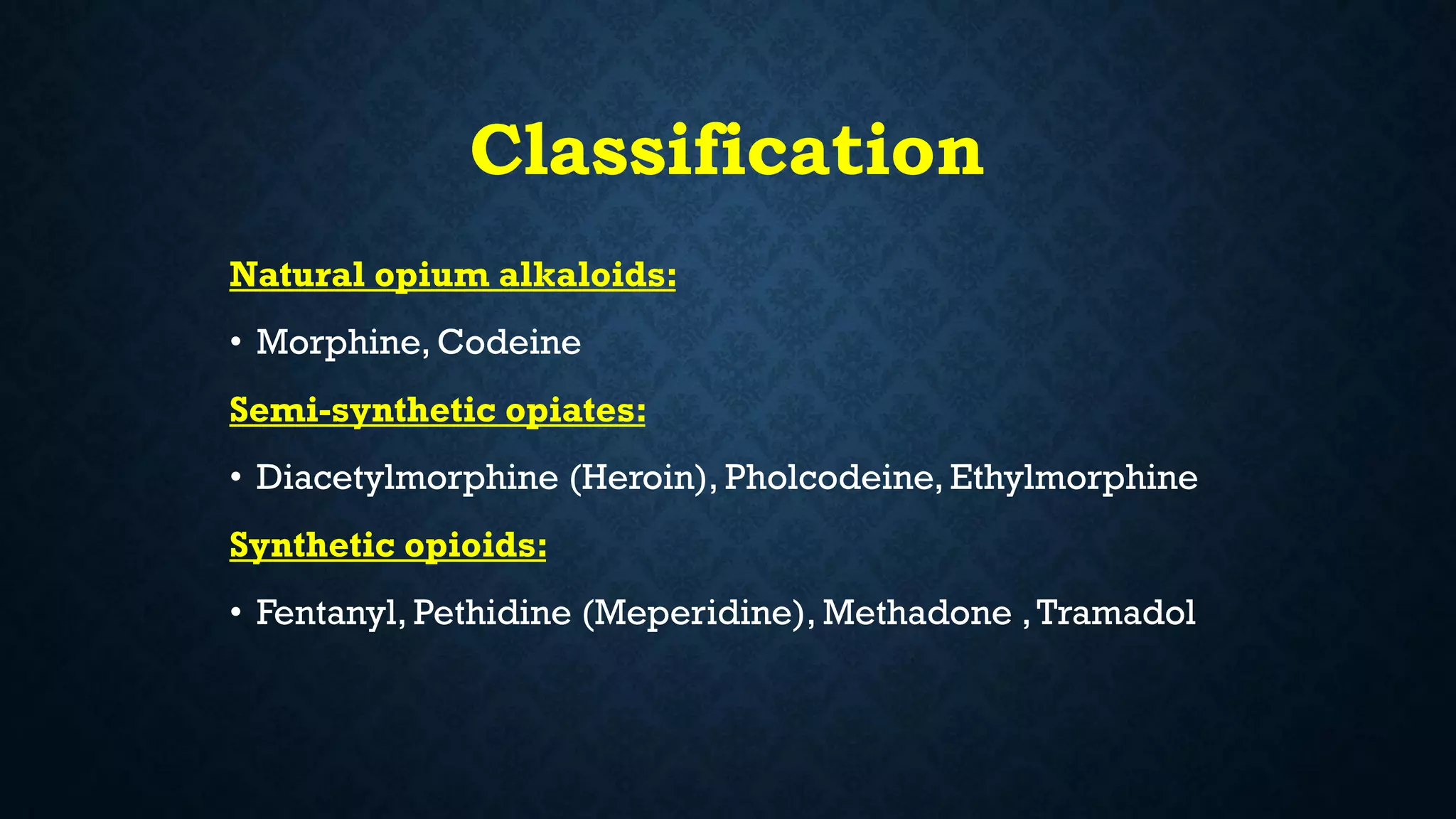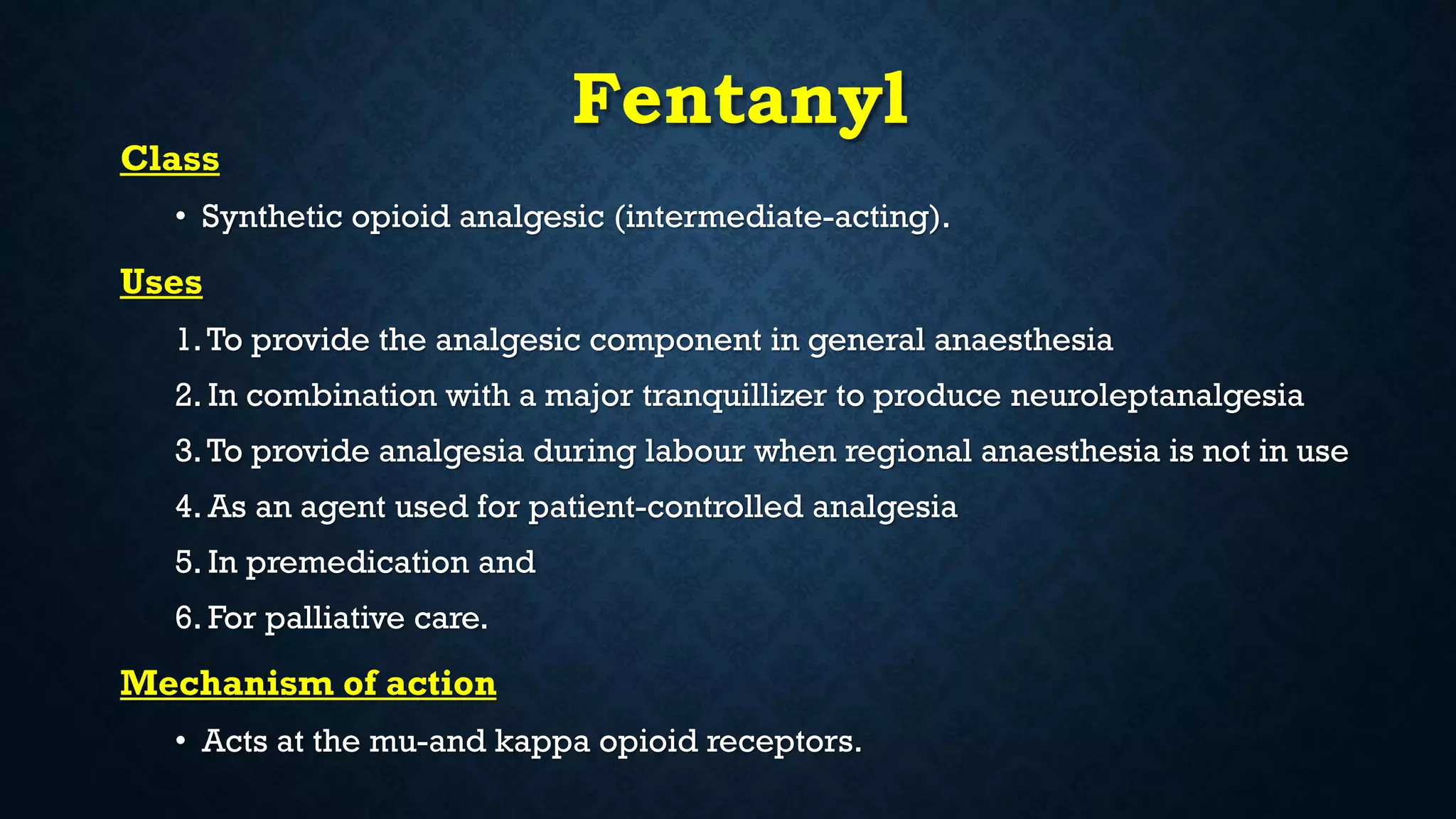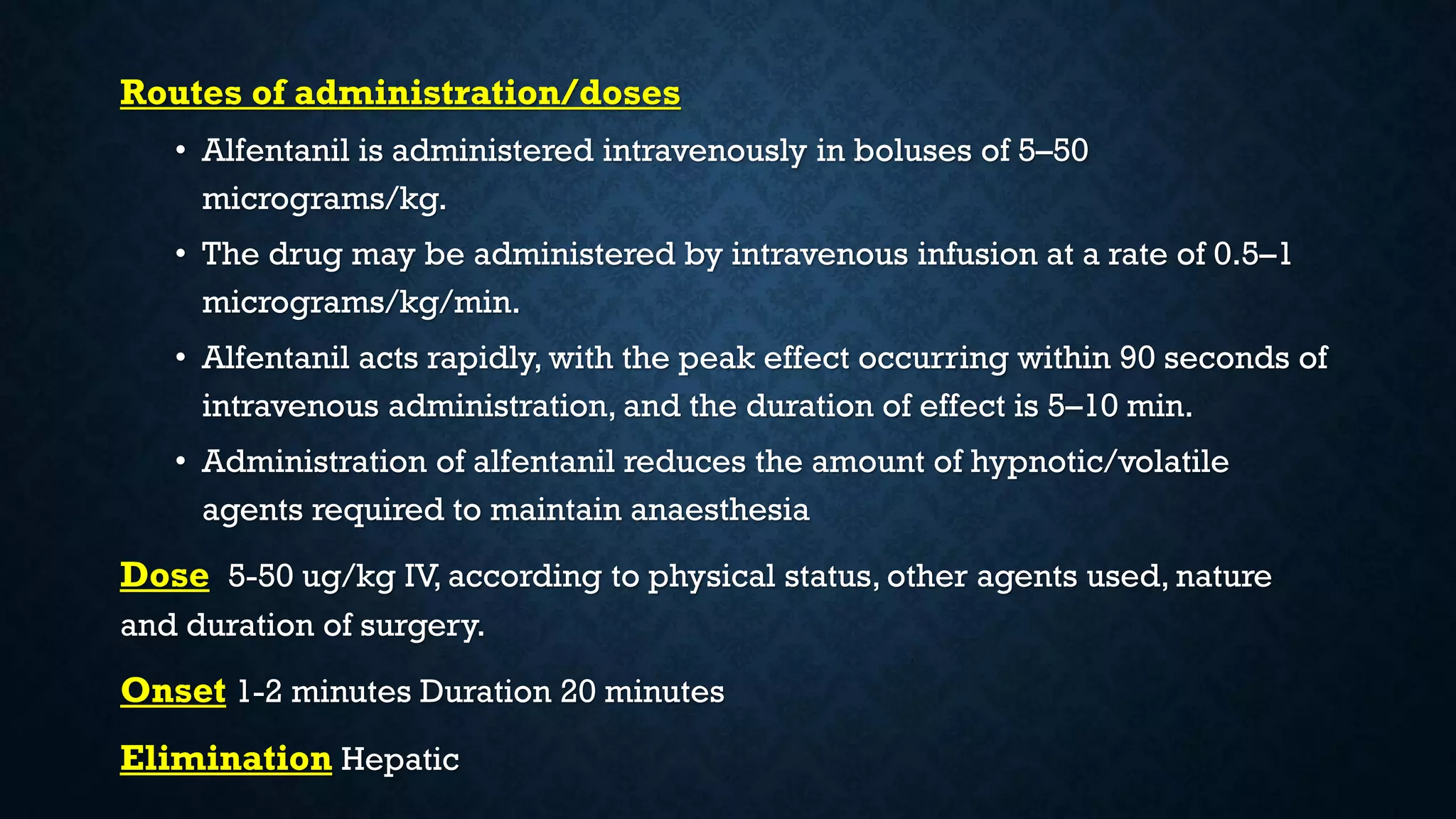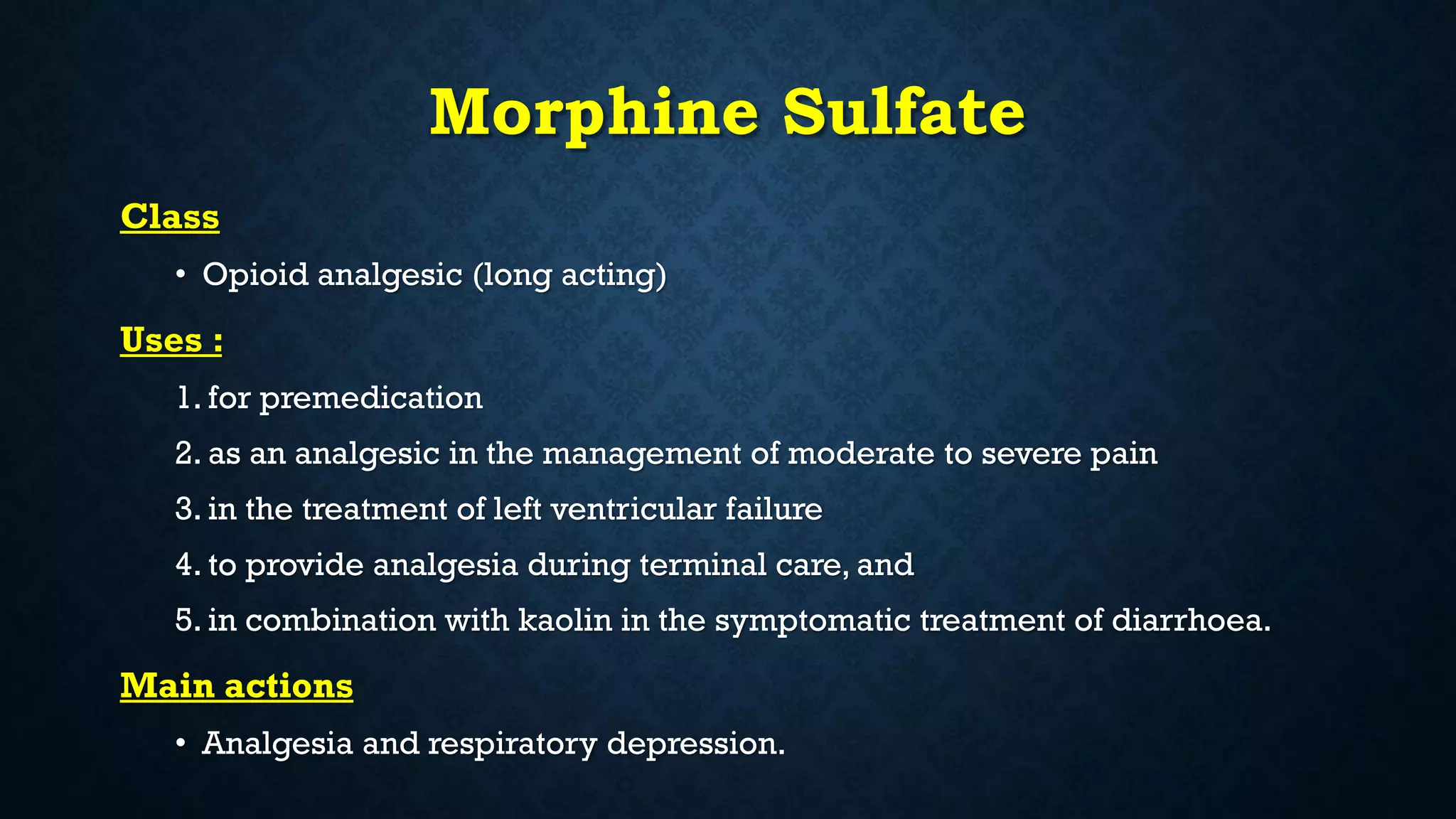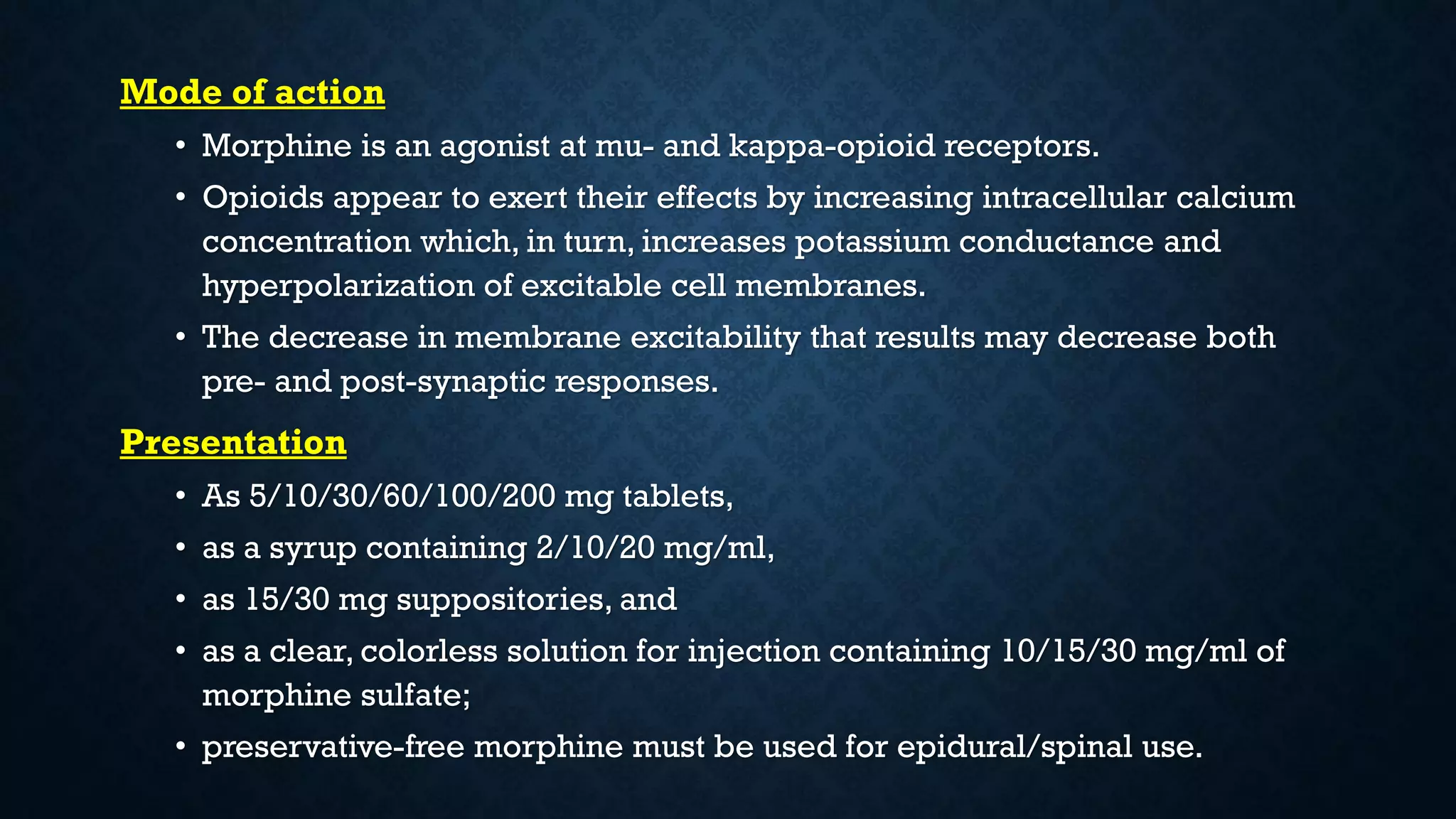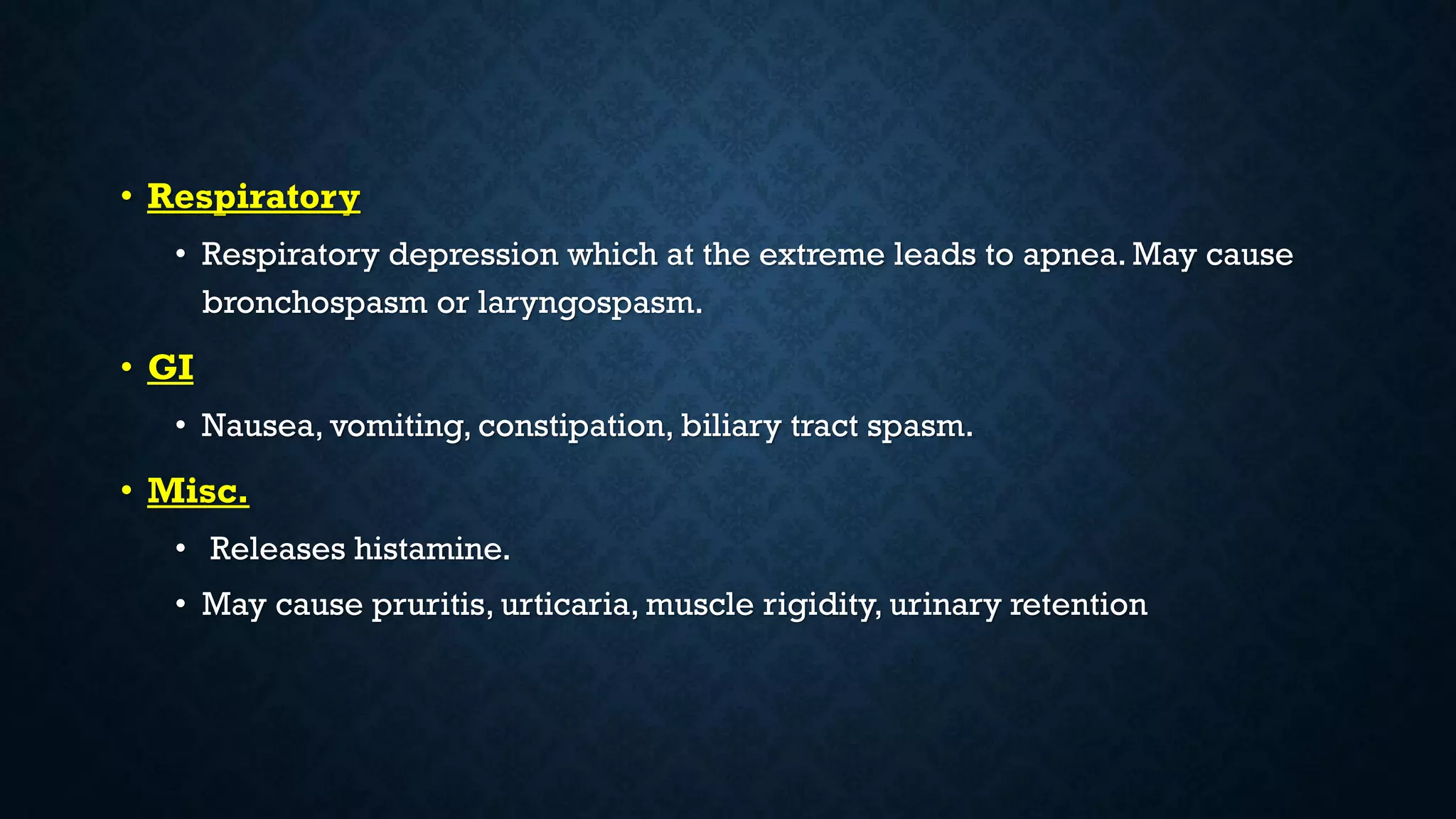The document discusses several opioid agonists and antagonists including fentanyl, sufentanil, alfentanil, morphine, nalbuphine. It describes their classification, uses, mechanisms of action, presentations, routes of administration, doses, effects, and other key details. Fentanyl, sufentanil, and alfentanil are synthetic opioid analgesics used for analgesia. Morphine is an opioid analgesic that acts on mu and kappa receptors. Nalbuphine is an agonist at kappa receptors and antagonist at mu receptors, producing analgesia without respiratory depression.

